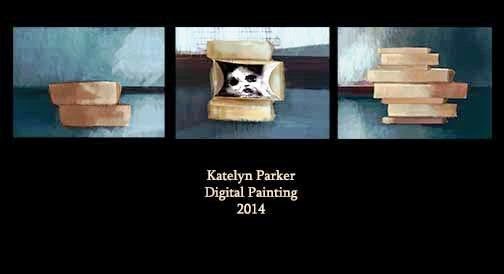| Katelyn Parker Mixed media digital painting, 2014 |
As governments in the West begin to tighten purse strings and to stimulate growth in their economies times have become tight for all. The consumer economy responds by increasing the pressure on individuals to continue to buy, buy, BUY.
Advertisers find even more devious methods of intensifying our desire for the latest products. The pressure to buy is intense, and constant.
Are consumers victims of consumer culture?
Or are we villains?
Although we know that an increasing amount of goods are made using slave/child labour, we seem to be able to navigate our way around the ethics and morality issues and continue to buy from companies that have been exposed as employing slavery to increase their profit margins. Our complicity in the continuation of slave labour makes it difficult to position consumers as victims of consumer culture. The real victims continue to be those that suffer working in unsafe and often brutal working conditions in order to satisfy the west's appetite for new things to buy. This digital artwork came about after doing research into practices of slavery that exist today. The stories and videos I have read and seen tell of kidnappings, routine brutal beatings, withholding of pay and identity documents and other abuses that largely go untouched by mainstream news outlets. The artwork above was a response to the vulnerability of a group of individuals that have absolutely no power to change their position in life.
At least consumers have choice, we do not have to buy. This makes it difficult to position consumers as victims of consumer culture. However I don't know that it makes us villains either.
Unless otherwise stated all images have been sourced from Wikimedia Commons and have been assigned a Creative Commons Attribution Share-Alike License or are from the Public Domain
All of my artworks unless otherwise stated are shared under a Creative Commons Attribution Share-alike license (Version 4.0 (international licence)
All of my artworks unless otherwise stated are shared under a Creative Commons Attribution Share-alike license (Version 4.0 (international licence)













